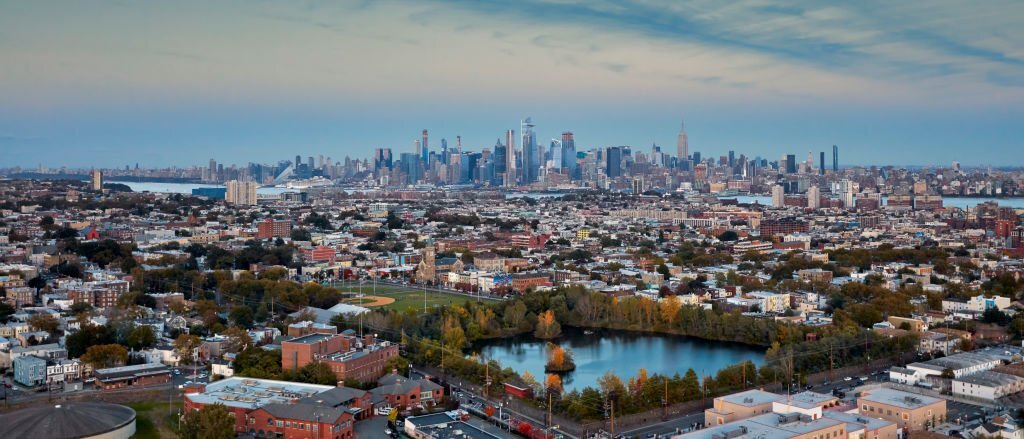You want to visit New York City. You’ve been dreaming of it. You’re worried it’s nothing more than a pipe dream. Or maybe you dream of a job in the big apple. But you could never afford to live there. You’re priced out for both visiting or settling.
Good news! You’ve got a new alternative. A New Jersey alternative…Jersey City! Jersey City is gaining quite a reputation. Some people call it the sixth borough. This, of course, is a reference to the fact that New York City is composed of five boroughs – Manhattan, Brooklyn, Queens, The Bronx and Staten Island.
About Jersey City
Jersey City is also known by the nickname Wall Street West, since it is just a hop, skip and a jump from downtown Manhattan and many young professionals just starting their big city careers are choosing to call Jersey City home.
Plus, accommodation is much cheaper than in Manhattan and transportation to the city that never sleeps is convenient, reliable, and fairly simple, as you will see in the next section. On top of that, Jersey City offers direct access of its own to some of the most desirable tourist destinations in New York City.
Jersey City is the second-largest city in the garden state, behind Newark. Jersey City can be an affordable and practical option for settling or just visiting. But is it safe? That’s the question this article aims to answer for you.
Take a minute to explore the streets of Jersey City and get the answers for yourself! First up, how to get there!
Jersey City History
Jersey City has some historical landmarks worth visiting if you don’t have time for a trip into New York City or an extra day to fill.
They include The Colgate Clock. Yes, like the toothpaste. The Colgate Clock was built in nineteen twenty four and used to sit atop the Colgate factory. The clock stood alone on an abandoned lot until recently when it was moved to the waterfront near the Goldman Sachs building, who now maintain the clock.
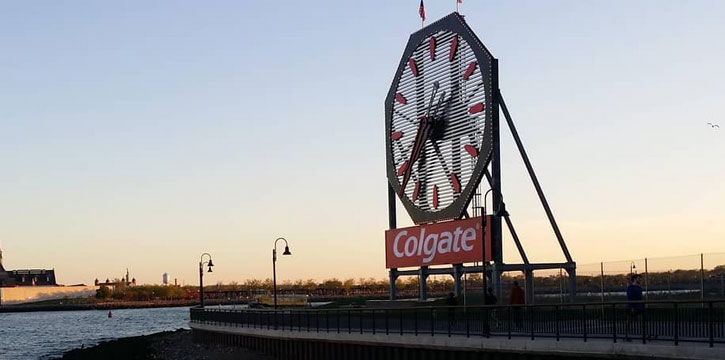
Funny fact! The size of the clock was reduced when they moved it to comply with a local no-billboard law.
There’s also a local movie house, the Loews Movie Palace, which is designated on the National Register of Historic Places. It was opened in nineteen twenty nine during the golden age of movie palaces. Also, nearly a century old! You might have seen it in the film ‘Last Days Of Disco’ or the music video for the song ‘Under Cover Of Darkness’ by The Strokes.
Funny Fact! The theater closed for a while after nineteen eighty six and the last film shown there was ‘Friday The 13th Part Six: Jason Lives’. The original price of construction back in nineteen twenty nine was two million dollars, back when two million meant something.
Today, there is a seventy two million dollar restoration planned.
The architecture in Jersey City is also admirable and might be of interest to the architectural buff, especially the local county courthouse, built in the Beaux-Arts style
Jersey City Information
One of the things that makes Jersey City so attractive is the proximity to the Holland Tunnel, one of the primary routes into Manhattan. The Holland Tunnel lets you out in lower Manhattan near Canal Street and is accessible from Route 139 on the Jersey Turnpike.
The Holland Tunnel travels beneath the Hudson River. It was originally conceived in 1906 and finally completed in 1927. Nearly a century old!
Funny fact! The tunnel is named after its chief architect, Clifford Holland and New York City itself was originally called New Amsterdam, which is in Holland!
You don’t have to go under the river. You can even go over the river into the urban woods of New York City. Take a sunny drive across the George Washington Bridge, or as New Yorkers call it, the G.W.
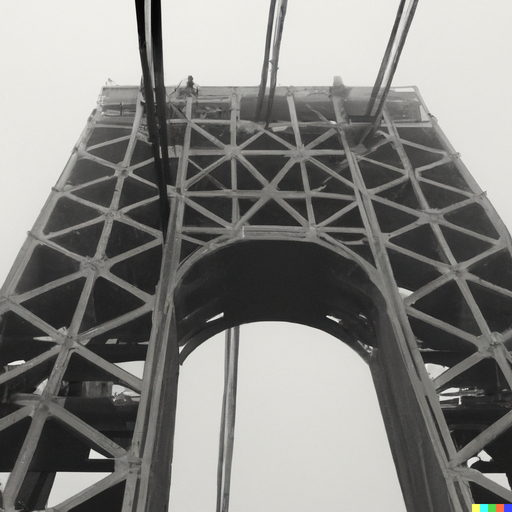
The G.W. bridge opened to traffic in 1931, after four years of construction. It is a double decker suspension bridge and the world’s busiest motor vehicle bridge. It is 4,760 feet long, a bridge span outdone only by the Golden Gate Bridge in San Francisco.
Another funny fact! The fact that most Jerseyans travel to New York City via bridge or tunnel, whether by car or public transportation, is the reason people who live in Jersey but come to the city to go clubbing on the weekends are affectionately referred to as ‘B and T-ers”.
Jersey City Public Transportation
Jersey City is serviced by a robust public transportation system that connects it to various parts of New Jersey and New York City. Here’s an overview of the public transportation options available in Jersey City:
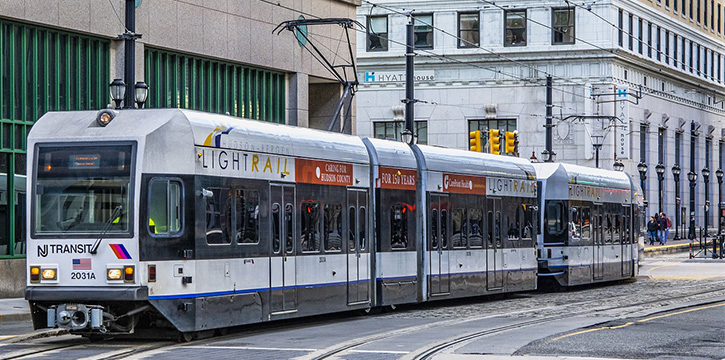
1. PATH (Port Authority Trans-Hudson) Trains:
- Operated by the Port Authority of New York and New Jersey.
- Connects Jersey City to Manhattan, with stops at Journal Square, Grove Street, Exchange Place, and Newport in Jersey City.
- Operates 24/7, making it convenient for commuters and travelers.
2. NJ Transit Trains:
- The Hudson-Bergen Light Rail (HBLR) has multiple stops in Jersey City, including Liberty State Park, Exchange Place, and West Side Avenue.
- Provides connections to other parts of New Jersey, including Hoboken, Bayonne, and North Bergen.
3. NJ Transit Buses:
- Numerous bus routes serve Jersey City, providing transportation within the city and to other parts of New Jersey.
- Some routes also offer direct service to the Port Authority Bus Terminal in Manhattan.
4. Ferries:
- NY Waterway operates ferries that connect Jersey City to Manhattan. Popular stops include Paulus Hook, Liberty Harbor, and Port Liberte.
- Offers a scenic and often quicker alternative to other modes of transportation, especially during peak commuting hours.
As of May 2024 Jersey City boasts excellent transportation scores, making it a convenient place for residents. The city has a Walk Score® of 87/100, indicating that it is “very walkable.” Additionally, it has a Transit Score® of 70/100 and a Bike Score® of 64/100, highlighting the city’s excellent transit options and bikeability.
Newark International Airport
Speaking of modes of transportation, another feature that makes Jersey City attractive is the proximity to Newark International Airport. Because it is so close, many travelers seek accommodation in Jersey City, increasing options and competition for your dollars, which in turn benefits you, the consumer.
Newark Liberty International Airport was built in 1928 and it was operated by the Army during World War Two. Newark transports over forty million passengers a year. It is a major connection point for Asia, Europe and South America.
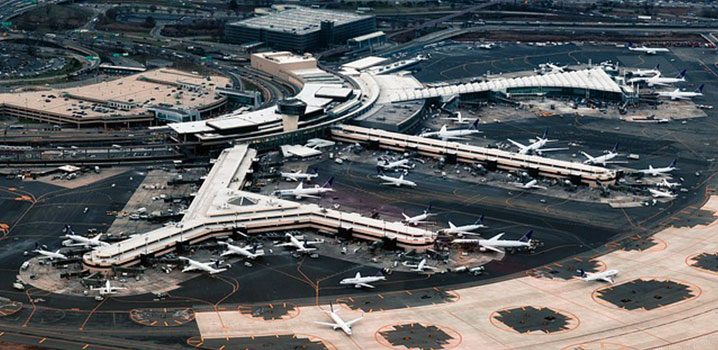
The reason the Hudson River and New York City are both so easily accessible from Jersey City is because it sticks out on the end of a peninsula facing the Hudson River, overlooking the river’s mouth. The peninsula is almost entirely surrounded by water and also encompasses Bayonne and Hoboken. Hoboken is another nearby haven for young professionals working in the big city.
Jersey City Real Estate
Jersey City’s housing market is currently experiencing a somewhat competitive environment. On average, homes in the city receive about 4 offers and typically sell in approximately 40 days. This is a notable increase from the previous year when homes were selling in about 28 days.
Pricing Trends
The median sale price for homes in Jersey City has seen a decline over the past year. As of last month, the median sale price stood at $625,000, marking a 10.7% decrease from the previous year. Additionally, the median sale price per square foot is $490, which is down by 6.7% since last year.
Sales Volume
In June 2023, a total of 190 homes were sold in Jersey City. This represents a decrease from the 235 homes sold during the same month in the previous year, indicating a 19.1% year-over-year drop.
Market Competitiveness
Jersey City’s housing market is described as “somewhat competitive” with a Redfin Compete Score™ of 52. Some homes in the area receive multiple offers, and on average, homes sell for around their listing price. The average home can sell for about 3% above the list price and typically goes pending in around 15 days.
Migration & Relocation Trends
Between May and July 2023, 29% of Jersey City homebuyers were looking to move out of the city, while a significant 71% preferred to stay within the metropolitan area. Interestingly, 3% of homebuyers nationwide were considering relocating to Jersey City. The top cities from which people were considering moving to Jersey City included Buffalo, San Francisco, and Lincoln. Conversely, popular destinations for those considering leaving Jersey City were Miami, Philadelphia, and Boston.
Environmental Considerations
Climate risks are becoming an increasingly important factor for homebuyers. In Jersey City, approximately 4,833 homes (or 9% of the total) are currently at risk of flooding. This number is projected to rise to about 14,706 homes (or 27% of the total) within the next 30 years. The city’s flood risk is increasing at a rate faster than the national average.
Jersey City Demographics
Thanks to improved infrastructure and significant investment—including literally millions of dollars being poured into certain areas—parts of Jersey City are undergoing rapid gentrification. Let’s delve into the demographics and statistics for Jersey City.
More than fifty percent of that population falls in the eighteen to fifty four demographic. Twenty percent are under eighteen. The remaining are over fifty five. Evenly split fifty-fifty male to female.
Population: The population of Jersey City approached three hundred thousand in the last census.
- Age Distribution: Over fifty percent of this population falls within the eighteen to fifty-four age bracket. Twenty percent are under eighteen, with the remainder being over fifty-five.
- Gender Distribution: The population is evenly split between males and females.
Ethnic Distribution
The city boasts a diverse demographic, with over twenty percent each of White, Hispanic, Asian, and African-American residents. Remarkably, forty percent of residents are foreign-born. In terms of diversity, Jersey City proudly ranks as the fifth most diverse city in the entire United States! More on city rankings later in this article.
Educational Background
About a quarter of residents possess a master’s degree, another quarter possesses a bachelor’s degree and another quarter a high school diploma. The rest have an associates degree or less than a high school diploma.
Residents are predominantly described as diverse, motivated, and young.
- Income: The median household income stands at over seventy thousand, while the average individual income is over forty thousand—a figure slightly above the national average.
- Employment: The city boasts a low unemployment rate of less than four percent.
Living in Jersey City
‘The Sixth Borough’ offers lower prices than Manhattan or the other four boroughs as well as affordable living. The atmosphere is categorized as ‘urban feel’ and seventy percent of residents rent their home, as opposed to thirty percent who own.
The median average home value is just over four hundred thousand, with most homes falling in the two hundred to four hundred thousand range. The median average monthly rent is almost fifteen hundred, with the majority of rentals coming in over two thousand a month.
Nearly half the residents say the exteriors of homes in downtown Jersey City are of high quality, while over sixty percent say the interiors are of high quality. Sixty-nine percent say there is an abundance of homes from which to choose, with over seventy percent reporting few vacant or abandoned properties in the area.
However, a miserably low fifteen percent of residents say housing is affordable.
Visiting Downtown Jersey City
One of the better neighborhoods in Jersey City is Downtown, also known as the Historic District. It is considered one of the best places to live in Jersey City. What makes it historic?
The neighborhood used to be what was known as a ‘streetcar suburb’ and most buildings were constructed between eighteen eighty and nineteen twenty, mostly in the ‘Late Victorian’ or ‘Late Nineteenth and Twentieth Century Revival’ style. All told, there are fifteen different styles of architecture to be admired in the Historic District.
Now, thanks to projects launched by local organizations, the district is also home to exciting shops, dining establishments and designated recreational areas.
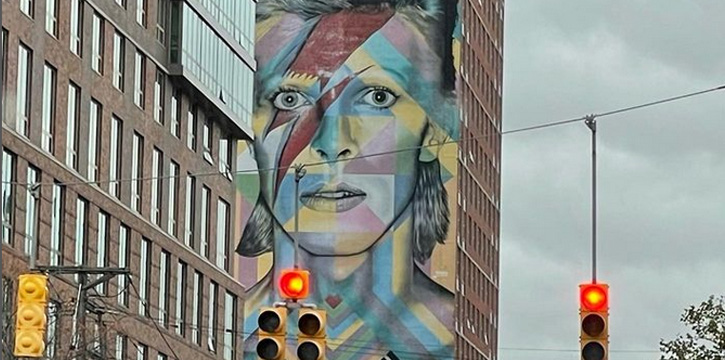
Jersey City Waterfront
It’s not too far of a stroll to the Waterfront area from the historical district. Jersey City’s is another newly energized and desirable neighborhood.
Known as WALDO, an acronym for Work And Live district overlay, the neighborhood is blossoming into an artists community, full of galleries and restaurants. The waterfront is also home to New Jersey’s largest skyscraper, the Goldman Sachs Tower. The waterfront is a calm and tranquil piece of heaven.
Liberty State Park
Also in this general area is Liberty State Park. Liberty State Park covers over one thousand two hundred acres and opened during bicentennial celebrations in nineteen seventy six.
Inside Liberty State Park, you will find the Liberty Science Center, an interactive science museum and learning center. The center has been open since 1993 and is home to the world’s fifth largest Imax dome and the largest planetarium in the Western Hemisphere.

There is a view of the Statue Of Liberty from the Liberty Walkway and a number of monuments worth visiting contained in the park.
Or it just makes a nice place to take a long walk on a beautiful day or get some recreation on a weekend.
Landmarks and Libraries
Lastly, Jersey City offers direct access to notable landmarks many tourists come to New York City to see.
The main tourist landmarks everyone comes to see are Ellis Island and The Statue Of Liberty, where immigrants have been historically welcomed by the light of the lady’s big torch.
The idea for the Statue Of Liberty came about in 1865 at the end of the Civil War. It was conceived by a Frenchman, Eduoard de Laboulaye, who was inspired by the abolition of slavery. This is symbolized by the broken chains on the Lady’s feet. Americans built the base of the statue.
The main tourist landmarks everyone comes to see are Ellis Island and The Statue Of Liberty, where immigrants have been historically welcomed by the light of the lady’s big torch.
You can access the Ferry to the Statue of Liberty at Liberty State Park. You can also access the ferry by PATH train to Liberty Park Station.
You can also take the Ferry to Ellis Island, which is where immigrants were first registered upon arrival in the United States. There is a museum of immigration on the island. For security reasons, Ellis Island is only accessible by Ferry.
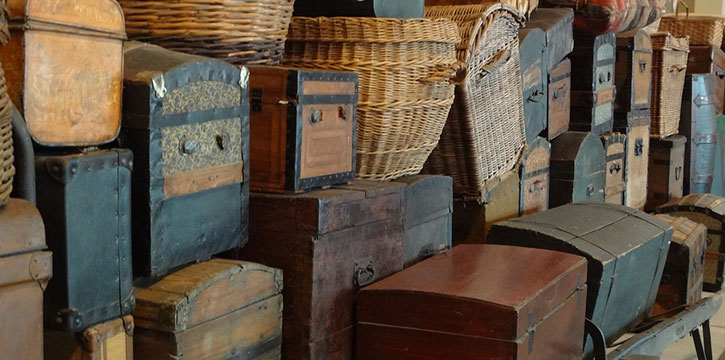
You can also take a ferry direct to one of the legit boroughs, Staten Island. Then you can technically say you’ve been in New York City even if you never make it to Manhattan! The Ferry is operated by PATH and accessible from the Whitehall Station.
Live To Learn
It’s a good thing residents are described as motivated, because there are plenty of places to learn new things in Jersey City.
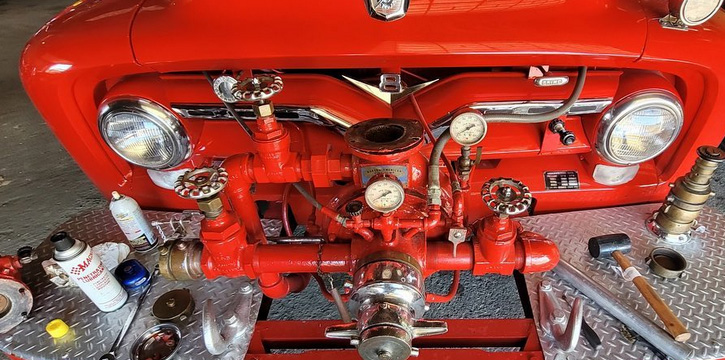
There is a museum of Russian Art from the former Soviet Union era. There is a Historical Museum, a Police Museum and a Fire Museum. Plus, the previously mentioned Liberty Science Center and Cultural Center MANA Contemporary.
In addition to that, Jersey City operates ten branches of the free public library system. You’re never far from a book and the world at your fingertips!
Is Jersey City Safe?
That’s the real question, right? The question you came to this article to answer. What good are any of the amenities or value-saving if you can’t raise your kids or walk alone at night there?
What do you want first, the good news or the bad news? The bad news is Jersey City has a higher than average crime rate. But there is some good news. Most crime is trending downward and Jersey City still has a lower crime rate than many cities. Jersey City is safer than thirty-four percent of cities in the U.S.
It is important to understand how to read crime maps to understand the statistics. In fact, residents insist West New Jersey is a relatively safe section. There are some bad pockets in other parts of Jersey City which bring down, or up depending on the category, the crime rate.
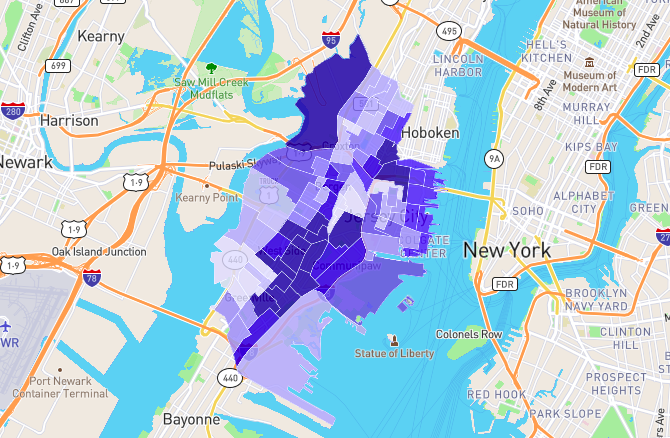
One thing to consider when interpreting a crime map is that the rate of crimes per resident may look higher than it is in areas with fewer Jersey City residents, such as retail zones, where people visit during the day but do not live.
Another factor is proximity to airports and parks. These are not highly populated residential neighborhoods either. So violent crime rates can appear inflated in these areas.
The difference between the lower crime areas in West Jersey City and the higher rates elsewhere is striking. In the West Jersey City neighborhoods, your chances of being a victim are low, just one in forty-six. But in the bad neighborhoods, chances skyrocket to one in only eight!
Most Common Crimes In Jersey City
The most common crimes in those sketchy hoods are property crime, burglary and theft. There are also assaults but it is important to note that in New Jersey, state law counts verbal intimidation as an assault infraction, so these types of crimes are included in the statistics.
Crimes that are less common but do happen in Jersey City include Identity Theft and Kidnapping. Yes, kidnapping as well as fraud. Stick with a group to avoid kidnapping and try not to use ATMs at night to avoid Identity Theft and Fraud.
There are a couple of particularly dangerous streets in Jersey City. Martin Luther King Boulevard, ironically named for the civil rights leader. Also, Ocean Avenue. This ain’t no Monopoly game Ocean Ave. Crimes occur on these streets nearly every thirty-six minutes.
Neighborhoods to avoid include Hackensack Waterfront, Lincoln Park, the Heights, West Side, Journal SquareMcginley Square and Bergen-Lafayette. Greenville is the most dangerous neighborhood. The crime rate there is higher than fifty-one percent of the entire country.
Jersey City Crime Rate in Numbers
Here, we delve into the crime rate numbers of Jersey City to provide a clearer picture.
- National vs. State vs. Jersey City Crime Rates:
- The national crime rate stands at 2,346 crimes per 100,000 people, with 388 violent crimes and 1,158 property crimes per 100,000 people. This translates to a 1 in 43 chance of being a victim of a crime.
- New Jersey, on the other hand, boasts a crime rate lower than the national average, with 1,354 crimes per 100,000 people.
- Jersey City’s crime rate is 1,940 crimes per 100,000 people, with 195 violent crimes and 1,497 property crimes per 100,000 people, giving residents a 1 in 52 chance of being a victim.
- Jersey City in Perspective:
- While the numbers might initially seem daunting, it’s essential to put them into perspective. Jersey City’s crime rate is 17.3% below the national average, which is a testament to its relative safety. However, when compared to the state of New Jersey, the city’s crime rate is 43.3% higher. This might raise eyebrows, but it’s crucial to understand that most areas in Jersey City are quite safe, and like any other city, certain pockets might have higher crime rates.
- A Deeper Dive:
- Beyond the broad numbers, it’s beneficial to understand the types of crimes that make up these statistics. For instance, while the property crime rate in Jersey City is higher than the state’s average, a significant portion of these are minor thefts, which, while still a concern, don’t pose a direct threat to personal safety.
In conclusion, while numbers provide a snapshot, understanding the context and nuances behind them is crucial. Jersey City, with its vibrant opportunities and diverse communities, remains a sought-after destination for many, and its safety profile, when viewed holistically, is reassuring for both residents and potential newcomers.
Residents And Ranking Reports
In recent polls, more than half of residents in Jersey City say they feel pretty safe and that crime doesn’t impact them that much. The remainder is a three-way tie between very, somewhat and not at all. Which matches the sentiment that West Jersey City is generally safe and the rest of the city brought down by the bad pockets.
Overall, residents mostly feel the police presence. Police people are visible and responsive, but almost half also say that they are somewhat slow to respond when they are not in the vicinity.
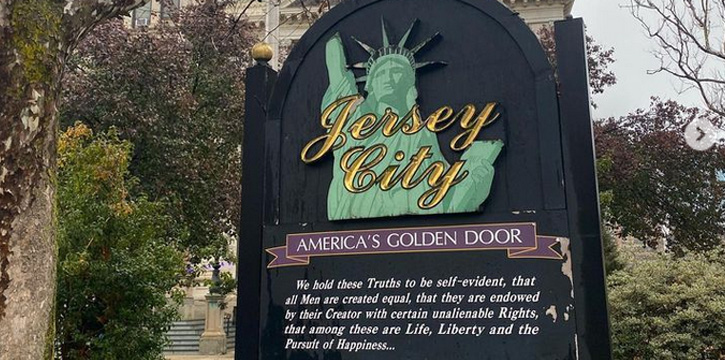
Jersey City is ranked number one in the category of most diverse suburbs in New Jersey, and number ten in best for young professionals. Jersey City is not just ranked highly in New Jersey, but also in the general New York City area, where it is also ranked in the top ten in these categories.
Overall, residents say that the benefits of living there overshadow the flaws, especially the multicultural experiences and the fact that it is a great commuter city.
Dining And Nightlife In Jersey City
The diversity of immigrants in Jersey City lends itself to eclectic tastes and the world class restaurants in Jersey City reflect that. Besides the restaurants, the plethora of prolific corner bodegas help the city retain a close-knit feeling. The city has been rated A+ for multicultural households.
Flavors you will find at local restaurants in Jersey City include authentic Puerto Rican and Cuban cuisine. Mmmm, empanadas! You might wander into an Italian street festival or a Filipino restaurant or a Chinese karaoke bar or just discover some good old American fusion.
Some of the best restaurants in Jersey City include an Asian Michelin-Star restaurant serving luscious lobster called Jungsik. A noodle joint known as Ani Ramen. The cleverly monikered Barge Inn. Korai Kitchen in Journal Square features Bangladeshi cuisine and The Boil provides Cajun seafood.
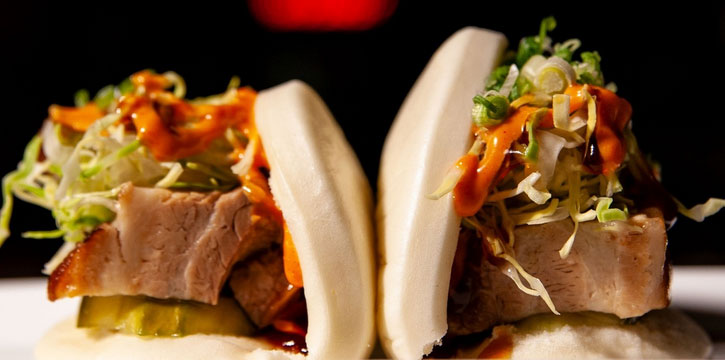
With all those choices, who even needs New York City? Plus, all these restaurants and most of the rest are far more reasonably priced than a Manhattan munchery.
Conclusion
Jersey City is definitely experiencing a cultural and economical arrival but is it safe? Not yet, not everywhere. So be sure to do all the cross-referencing you can when looking for a hotel or a place to live. You can’t be too careful. But that doesn’t mean you can’t enjoy it!
(the article was updated on May 2024)

Born and raised amidst the hustle and bustle of the Big Apple, I’ve witnessed the city’s many exciting phases. When I’m not exploring the city or penning down my thoughts, you can find me sipping on a cup of coffee at my favorite local café, playing chess or planning my next trip. For the last twelve years, I’ve been living in South Williamsburg with my partner Berenike.

